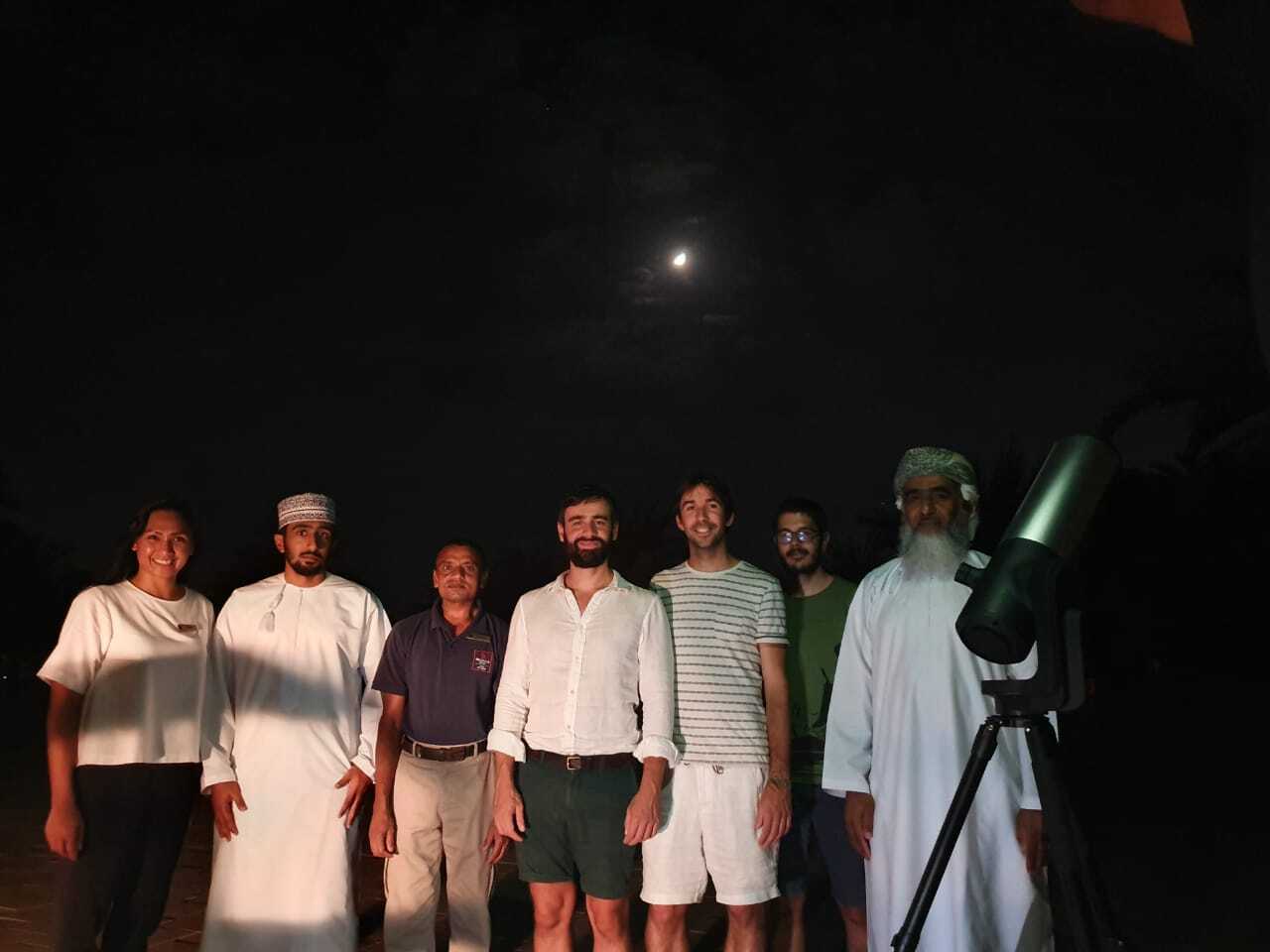
Marseille and Mountain View, September 17, 2019 -- On September 7, 2019, a Unistellar team flew to Oman and successfully used the eVscope to observe an occultation of the asteroid Orus for the first time. The team was responding to NASA’s call to the astronomical community to contribute to its Lucy space mission, making the observation a demonstration of the potential of citizen science.
The Orus asteroid occulting a star, in the middle of the screen. https://vimeo.com/359646990
In 2027 the Lucy mission will be the first spacecraft to fly by Jupiter’s Trojans, primitive bodies, including Orus, that hold crucial information about the history of our solar system. Because many uncertainties surround the six targeted asteroids, NASA needs to understand their shape and trajectories, and therefore to improve the path of its $450 million spacecraft. Determining the shape and size of an asteroid will, for example, allow engineers to optimize the exploration schedule, and increase the science return generated by the mission.
Discovered in 1999, we don’t yet know much about Orus. Its shape is poorly constrained, and we don’t know if it possesses one or several satellites. This information would have consequences for the design of the exploration phase of the Lucy mission.
Oman was the most favorable spot on Earth from which to observe Orus. More precisely, what observers could see was Orus occulting a magnitude 11 star. This event generated a light curve full of valuable information, such as a precise estimate of Orus’ position as well as an assessment of its size.

“This is the first time an Orus occultation has been observed,” said Dr. Franck Marchis, a senior astronomer at the SETI Institute and Unistellar’s Chief Scientific Officer. “We were in the right spot, and everything worked perfectly. One station located near Khalil, Oman detected and recorded this occultation while the other one only 30 km away did not see anything. In the future, it will be as simple as pushing a button on the Unistellar eVscope’s app for users to participate in these campaigns.”
On Monday, September 16, 2019, Marchis will present this work at the joint meeting of the European Planetary Science Congress and the American Astronomical Society’s Division for Planetary Sciences in Geneva, Switzerland. He will present during the session, “Role of Citizen Science and Outreach in Scientific Research.”
Marc Buie, an astronomer at Southwest Research Institute, provided the predicted path of the occultation using a combination of observations from the ESA space telescope Gaia, and ground-based facilities like PanSTARRS, as well as other robotic telescopes. A new occultation by Orus will be visible in Australia in November of this year.
One of the unique features of the Unistellar eVscope is that users can easily become citizen astronomers. Within minutes they can set up their telescopes and point them at any celestial object to gather accurate scientific data while they are observing it. This capability recently made the news when Unistellar and the SETI Institute signed an agreement to develop citizen astronomy by leveraging Unistellar’s extensive network of connected eVscopes.
With Lucy scheduled for launch in October 2021, Unistellar eVscope users will have multiple opportunities to contribute to NASA’s mission. More than 2,500 connected telescopes have already been pre-ordered worldwide, with the first ones shipping this week.
“This achievement of the Unistellar telescope is a powerful demonstration of how transformative this instrument is for amateur astronomy and citizen science.” Said Bill Diamond, President and CEO of the SETI Institute. “For the first time in history, an affordable and portable telescope can make real contributions to serious science! We’re delighted to be the science partner for what is truly a game-changer for astronomy and for science education.”
About Unistellar
Unistellar is the start-up behind the eVscope, a unique, compact, and user-friendly digital telescope. Its light-amplification technology allows users to observe galaxies, nebulae, and comets in unparalleled crisp and colorful detail. In partnership with the SETI Institute, the Unistellar eVscope also allows anyone to contribute to astronomical discoveries while observing.
The Unistellar eVscope received a CES Innovation Award in 2018 in the category Tech for a Better World and has been nominated for a SXSW 2019 Innovation Award. It has raised more than $3 million through crowdfunding, and more than 2,500 digital telescopes have already been preordered.
Full Press Release can be found here: https://en.calameo.com/read/004812363a2edaa7c4bd8
Full material can be found here: https://app.box.com/s/ddc7vrmdrc81j2ywoiv12gc5hj3spjt0
About the SETI Institute
Founded in 1984, the SETI Institute is a non-profit, multi-disciplinary research and education organization whose mission is to lead humanity’s quest to understand the origins and prevalence of life and intelligence in the Universe and to share that knowledge with the world. Our research encompasses the physical and biological sciences and leverages expertise in data analytics, machine learning and advanced signal detection technologies. The SETI Institute is a distinguished research partner for industry, academia and government agencies, including NASA and NSF.
Contact information
Unistellar
Ludovic Nachury, Head of Communication:
press@unistellaroptics.com
+33 6 24 31 63 89
SETI Institute
Rebecca McDonald, Director of Communications
rmcdonald@seti.org
Science Contact
Franck Marchis, Co-founder & CSO at Unistellar and Senior Astronomer at SETI Institute
fmarchis@seti.org
+1 510 599 0604





